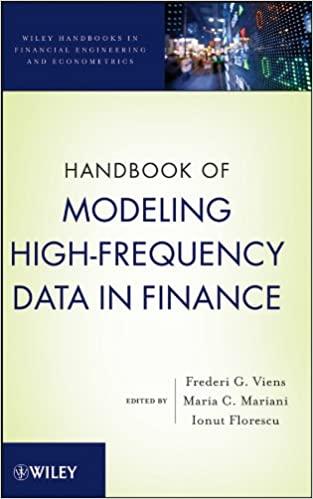Question
For all parts of this question, assume that the CAPM holds (i.e. you can borrow and lend at the risk-free rate, and there are no
For all parts of this question, assume that the CAPM holds (i.e. you can borrow and lend at the risk-free rate, and there are no limitations to short-selling). The risk-free rate of return is 4%. The market portfolio has expected rate of return of 10% and standard deviation of 12%. a. Capital Inc. corporatios stock has an expected rate of return of 3.5% per year with a volatility of 30%. Kate says, No rational person would hold a risky asset expected to return less than the riskless rate! It must be mispriced. Is Kate correct? Why or why not? b. Consider the following data on two stocks whose returns have a correlation of 0.6 with each other: Expected Return: Target 8% Tesla 25% Standard Deviation: Target 14% Tesla 45% Larry owns $35,000 worth of Target stock, $15,000 worth of Tesla stock, and he has no other investments. a) Compute the expected rate of return (% per year), and volatility of Larry's portfolio. b) Suppose that Larry says he cannot tolerate any more volatility than his portfolio has right now. Given this risk tolerance, is he maximizing his expected return? If he is, explain why? If he is not, explain how he should invest to maximize his expected return without taking on more risk. (Hint: describe a specific trading and investment strategy).
Step by Step Solution
There are 3 Steps involved in it
Step: 1

Get Instant Access to Expert-Tailored Solutions
See step-by-step solutions with expert insights and AI powered tools for academic success
Step: 2

Step: 3

Ace Your Homework with AI
Get the answers you need in no time with our AI-driven, step-by-step assistance
Get Started


